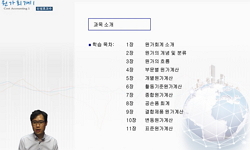이 연구의 목적은 국내 제조기업의 온실가스 배출이 타인자본비용에 미치는 영향을 실증 분석하는 데 있다. 이를 통해 탈탄소화 시대에 기업의 온실가스 감축 투자가 금융비용 측면에서 잠...
http://chineseinput.net/에서 pinyin(병음)방식으로 중국어를 변환할 수 있습니다.
변환된 중국어를 복사하여 사용하시면 됩니다.
- 中文 을 입력하시려면 zhongwen을 입력하시고 space를누르시면됩니다.
- 北京 을 입력하시려면 beijing을 입력하시고 space를 누르시면 됩니다.

국내 제조기업의 온실가스 배출이 타인자본비용에 미치는 영향 = The Effect of Greenhouse Gas Emissions on the Cost of Debt Capital: Evidence from Korean Manufacturing Firms
한글로보기https://www.riss.kr/link?id=A109466820
- 저자
- 발행기관
- 학술지명
- 권호사항
-
발행연도
2024
-
작성언어
Korean
- 주제어
-
등재정보
KCI등재
-
자료형태
학술저널
-
수록면
413-438(26쪽)
- DOI식별코드
- 제공처
- 소장기관
-
0
상세조회 -
0
다운로드
부가정보
국문 초록 (Abstract)
이 연구의 목적은 국내 제조기업의 온실가스 배출이 타인자본비용에 미치는 영향을 실증 분석하는 데 있다. 이를 통해 탈탄소화 시대에 기업의 온실가스 감축 투자가 금융비용 측면에서 잠재적 이익을 가져오는지 여부를 탐색하고자 한다. 국내 상장 제조기업의 2011년부터 2022년까지 온실가스 배출량과 재무정보를 통해 2,154개의 불균형패널자료를 구축한 후 고정효과모형을 이용하여 분석하였다. 분석 결과, 목표관리제 기간에 다배출 업종 중소기업의 탄소집약도와 타인자본비용 간 통계적으로 유의한 양의 상관관계가 발견되었다. 배출권거래제 도입 이후에는 탄소집약도와 타인자본비용 간 유의한 양의 상관관계가 다배출 대기업으로 확장되어 나타났다. 급격한 경기침체를 가져왔던 코로나19 팬데믹 기간에는 두 변수 간 유의한 관계가 발견되지 않았다. 업종별 분석 결과, 반도체‧디스플레이, 전기전자에서 동일 업종 내 다배출 기업의 탄소집약도 증가 시 타인자본비용이 증가하는 것으로 나타났다. 이러한 연구결과는 국내 제조기업의 온실가스 감축 투자가 비용만 유발하는 것이 아니라 타인자본비용 절감이라는 유의미한 편익을 가져올 수 있다는 실증적 증거를 제시한다.
다국어 초록 (Multilingual Abstract)
This study investigates whether Korean manufacturing firms can potentially lower financing costs through carbon abatement investments analyzing the effect of firms’ greenhouse gas (GHG) emissions on the cost of debt capital. We use data on GHG emiss...
This study investigates whether Korean manufacturing firms can potentially lower financing costs through carbon abatement investments analyzing the effect of firms’ greenhouse gas (GHG) emissions on the cost of debt capital. We use data on GHG emissions and finances of listed Korean manufacturing firms from 2011 to 2022 and construct an unbalanced panel dataset comprising 2,154 observations. A fixed effects model is employed in the empirical analysis. The results show a statistically significant positive correlation between carbon intensity and the cost of debt capital for SMEs in the high-emitting industries under the Target Management System. After the introduction of the Emission Trading System in 2015, this positive correlation was expanded to high-emitting large companies. No significant correlation was found during the COVID-19 pandemic, which led to an abrupt economic downturn. Industry-specific findings further suggest that high-emitting companies in semiconductors/display and electronics sectors face increased cost of debt capital as carbon intensity rises. These empirical findings suggest that carbon abatement investment by Korean manufacturing firms can yield financial benefits in the form of lower cost of debt capital.
동일학술지(권/호) 다른 논문
-
- 한국환경경제학회
- 신학림
- 2024
- KCI등재
-
- 한국환경경제학회
- 문종우
- 2024
- KCI등재
-
Examining Environmental Efficiency of Power Generation Plants under the Emissions Trading Scheme
- 한국환경경제학회
- 오민혜
- 2024
- KCI등재
-
실물옵션을 이용한 PPA 최적 투자 시점 분석: 전력 가격과 배출권 가격의 이중불확실성을 중심으로
- 한국환경경제학회
- 이재형
- 2024
- KCI등재




 ScienceON
ScienceON KISS
KISS




